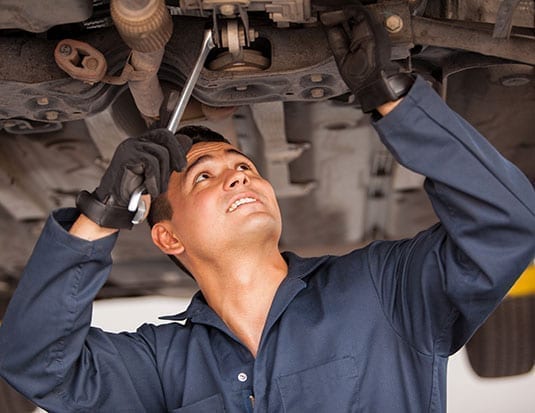An ounce of prevention can nip repairs in the bud!
Ken Gillies doesn’t mind sounding like a broken record when it comes to avoiding downtime.
“Preventive maintenance, preventive maintenance,” says the Senior Truck Consultant for Element FleetManagement. “I could repeat that about 50 times and fill up a whole column with it.”
The key to ducking downtime is a good comprehensive PM program, where services are done on time. “The other thing that’s important in the PM space is not just changing the oil and filters and a quick look, but a good look at the vehicle to make sure any potential problems that are starting to appear are attended to promptly,” says Gillies.
Research cost
But in the event that a truck does go down, the opportunities to influence cost control are slim. “Once a problem has occurred and resulted in some sort of significant or major failure that’s going to keep the truck down a long time, it’s serious,” says the consultant.
These occurrences offer some opportunity to research the cost, or estimates of cost, that are being presented to the customer by the repair facility. “Maybe there are some options where you could go with a remanufactured component and cut the overall repair time,” suggests Gillies. “Or, if the vehicle is within its warranty period, you can certainly negotiate for getting parts in a quicker manner, depending on the component needed.”
He also recommends working with the shop that has more than one shift of technicians, who are willing to overlap. “Shift one works on your job, and then shift two also works on it, if you can utilize a relationship that you have with a particular facility, that’s good. It also means you know you’re going to be a little higher priority.”
A facility with a heavy truck focus is more likely to have multiple shifts of technicians. “A light duty repair shop, where they deal with cars and up to one ton light trucks, maybe up to a class five or six, they may have some two-shift operations,” notes Gillies. “But those are fewer and further in between. If you can get associated with a repair facility that isn’t well known, it might be an opportunity to extend the relationship a little deeper. If you’re dealing with someone who is providing you with repair advice, they may be able to put together some resources that can procure parts in a quicker manner. They may also be able to provide some support from a price advantage.”
Replacement rental
Charlie Johns stresses that prevention is the key to avoiding downtime in the first place. The Regional Truck Manager at ARI notes that following a good preventive maintenance schedule is the best way to combat downtime. “We recommend that our clients follow the OEM preventive maintenance schedule based on the usage for the truck,” he says. “That way, you can hopefully catch repairs during the scheduled maintenance and you’ll avoid unscheduled repairs between the PM services.”
If possible, repairs should be scheduled outside of a driver’s regular working day. “Schedule it when they’re off, so that the truck is back and ready to work when the driver needs it, and it won’t affect their daily duties,” advises Johns.
But if a truck does go down, he suggests renting a replacement. “You’re only using it when you need it, and it can be returned as soon as the regular truck is ready to go back to work,” he says. “When you rent a truck, especially a commercial vehicle, all the inspections are up to date.”
Having a spare may be tempting, but Johns notes, “When you use a spare, those tend to be the older trucks in the fleet, and if those inspections aren’t up to date, it could be costly just to get that truck on the road for a week or two.”
He admits that getting a more complex truck rental can be tricky. “There are companies out there that have specialized equipment rental fleets,” Johns notes. “They don’t have as many of those trucks available as just your typical half ton pickup truck.”
It may also be that the truck in for repair may be nearing the end of its useful life and should be replaced. “If the repair is going to be very expensive and the truck is close to being at the end of its useful life, then we might suggest replacing it,” says Johns.
That’s when it’s wise to have a robust replacement cycle. “It’s very helpful to be able to predict when the end of the useful life of this truck is going to be, so we can plan to get a replacement ready while the current truck is still in service,” says the Regional Truck Manager. “You need to have a plan in place because the lead time for some of these trucks can be six months or longer.”
Data predicts failure
It’s possible now to use data to predict failure on certain components. “If we see trends in the repair history, we’ll recommend that certain components be replaced during a service to avoid it failing outside of a preventive maintenance schedule,” Johns says.
“But it really goes back to having a robust preventive maintenance program, and planning the replacement cycle for those types of trucks, so that if it does fail a little early, you’ve got something in the pipeline.”



